 Your new post is loading...
 Your new post is loading...
CNN has partnered with Snapchat Discover for a daily news program called The Update. The show launches today on Snapchat, and provides a rundown of the top stories from the day featuring videos from CNN reporters and bureaus around the world. The Update is scheduled to begin streaming on Snapchat Discover each day at 6 p.m. ET and will also produce breaking news segments. Adweek’s Jason Lynch writes that each episode will feature five or more stories, all in Snap’s vertical video format—as well as breaking news segments....
An Accenture survey of internet users around the world found a dramatic shift in TV viewing preferences, with computers abruptly displacing TVs as the preferred device for watching TV shows. The study, which surveyed 26,000 internet users worldwide, found a sharp drop—from 52% in 2016 to 23% in 2017—of people who said they preferred to watch TV shows the traditional way, on a TV. Meanwhile, more than four in 10 respondents (42%) said they preferred to watch TV shows on a laptop or desktop, up from 32% last year. The number who opted for smartphone viewing also grew, but less dramatically. When it comes to short video clips—though many respondents preferred to watch them via a laptop or desktop—the preference for viewing them on smartphones grew substantially in 2017 compared with a year prior....
The women’s rallies didn’t just draw millions of marchers to the streets of cities across the country and around the world, it sent viewers to cable news for continuing coverage of them. For MSNBC the 10 a.m. to 6 p.m. block was the most watched Saturday since March 29, 2003, during the early days of the Iraq war. MSNBC averaged 1.45 million total viewers. In the A25-54 demo MSNBC averaged 388,000, the best Saturday since Hurricane Rita coverage in Sept. 2005. MSNBC still trailed Fox News (3,075,000 total viewers /656,000 A25-54) and CNN (2,107,000 / 672,000) in the daypart....
Ironically, Netflix, the viewing source that gave binge-watching its name, probably has less instances of binge-viewing than any top-10 cable network with stacked programming. I would think viewers spend more time every month watching “Modern Family” on USA, “Full House” on Nick at Nite, “Criminal Minds” on ION, and “South Park” on Comedy Central than they do watching any single series on Netflix (although Netflix in total probably has more instances of binge-viewing than all of them combined).
So what does this mean for advertisers?
It’s not just that people are continuing to watch these shows. Their audiences are extremely loyal, and often not that easy to reach elsewhere. For example, “Big Bang” on TBS reached only about 30% of all adults 25-54 last season, but was still the most-viewed scripted series on television among that demo. ION’s “Criminal Minds” only reached about 15% of all adults 25-54 during the same period, yet was the fourth most watched scripted series on television. That represents an extraordinary amount of repeated viewing to a single show among a small group of extremely loyal and attentive viewers....
While broadcast viewers are thought to represent a more traditional TV audience than those watching cable, a new report says they are actually less likely to watch programming live than their cable counterparts, especially if the network in question is The CW. That information comes from TiVo Research's Q2 State of TV report, which was released today. The quarterly report tracks time-shifting using TiVo's Media TRAnalytics data set, which anonymously aggregates set-top box data from more than 2.3 million households including TiVo owners and other cable providers. According to the study, while the vast majority of TV viewing continues to be live, broadcast network prime-time viewing is more likely to be time-shifted than cable programming. Twenty-six percent of broadcast prime-time programming was time-shifted during the second quarter (23 percent overall was watched in the C3 window, from the same day to three days later; the other 3 percent was time-shifted four to seven days). In total day viewing, 20 percent of broadcast programing was time-shifted....
Last week, we analyzed all of the new fall TV shows to find out which ones are worth watching. As the new TV season kicks off this week, several media buyers have targeted the very same freshman programs as having the best chance to connect with audiences this fall: Designated Survivor, Pitch and This Is Us. But they're also scratching their heads over other fall trends, including the surplus of shows revolving around time travel, and another round of programs based on movies, despite the failure last year of Minority Report, Limitless, Rush Hour and Uncle Buck. The new TV show that is top of mind among buyers, and consistently the first one brought up when talking about the fall season's best bet, is ABC's Designated Survivor, starring this week's Adweek cover subject, Kiefer Sutherland. Sam Armando, lead investment director at Mediavest | Spark, said in the Sutherland profile that putting together a hit series is like completing a puzzle, "and you need all these pieces to kind of fit for success." Designated Survivor, he noted, boasts Sutherland's star power, a relatable premise about an Everyman thrust into an extraordinary situation and propulsive storylines. "All those pieces come together very nicely, so you think it would be successful," said Armando....
In a survey spanning 100 TV series, Netflix found that, on average, subscribers spend about two hours a day binge watching the show in question. But some shows, in particular, entrance viewers and leave them wanting more—say, sci-fi thrillers like Orphan Black or horror dramas like The Walking Dead. Subtle, slow-moving dramas like Mad Men, however, are watched at a more leisurely pace, as are comedies like Unbreakable Kimmy Schmidt....
Sick of your significant other skipping ahead and watching your favorite streaming shows without you? Lock them into a faithful TV-viewing relationship with a high-tech pair of series commitment rings, thanks to U.K. ice cream brand Cornetto.
The marketer, which tends to advertise around themes of teen love, created special rings that connect to streaming apps, and use near field communications to block access to TV shows you both watch unless your partner is nearby—thus putting an end to sneaking around with services like Netflix while feigning fidelity.
A two-minute video explains the concept, and illustrates the dangers of cheating—reaching its high point when one young woman pretends, in brilliantly unconvincing fashion, that she hasn't seen the episode she's watching with her boyfriend.
The idea of rings that forcibly prevent viewers from such dalliances is so silly and au courant that it almost doesn't matter that the details of its functionality aren't entirely ironed out....
While assessing the coverage of the launch of Amazon Video Direct—Jeff “Mr. Everything Store” Bezos’ gutsy challenge to YouTube—the figure $3 billion jumped out at me. That’s how much industry analysts estimate Amazon spends on video each year in its relentless drive to dominate on a playing field where YouTube, Facebook, Hulu and myriad others have plenty of pixels in the game.
Amazon’s multibillion-dollar appetite for video supremacy also includes cable companies as rivals. The product delivery giant recently began to offer its Amazon Prime streaming service, initially available only to those paying $99 a year for a Prime membership, as a standalone, for a $9 monthly fee, a buck less than Netflix. It’s also been cutting deals with myriad players and is eventually expected to offer a tailored bundle of programming services in a so-called “skinny bundle” package to lure the cord-shavers and cutters.
Yesterday’s Amazon Direct launch is a typically straight shot from the Bezos playbook. It puts a laser focus both on those who create the content, and on the customer experience. In contrast to YouTube, Amazon Direct is allowing those who make the videos to distribute and profit in a variety of ways, including: making their content available to Prime Video subscribers and receiving a per-hour royalty fee; offering them as rentals or sold as subscription through its Streaming Partners Program; and putting the videos up for digital rental or purchase. Producers can also opt to offer videos free in an ad-supported model with a 55% share of revenues—same as YouTube.
Can you go 7 for 7? This is one tough quiz!
Hitting up CES in Las Vegas this January? If you're like many marketers, the rapid developments in consumer technology are impacting how you're approaching your job. Disruptive technologies transform consumer behavior and change how marketers get their messages across. That's why staying ahead of the next big thing has never been more important.
We've been through the year of mobile and the year of data. So what breakthrough will shift the balance this year? We've outlined five of the top technologies you'll want to keep your eyes on as you're scouring the CES show floor..
So, John, how do you explain the drop in live TV viewers?
There are three key reasons: - Convenience . . . time shifting to view whenever desired.
- Additional viewing sources . . . mobile, computers etc.
- Low cost viewing platforms with minimal advertising . . . OTT (Over The Top) and online streaming...
Sesame Street’s move last week to partner with HBO came as a surprise to some, but it makes a lot of sense given the broad trends in today’s media industry. The new world of media prizes both high quality content and high quality technology. In fact, to thrive you really need both. And for that reason, Sesame Street Workshop made a smart move to bolster distribution and fill gaps in its business model.
Public media has generally prioritized technology only to the extent necessary to distribute its content, which has been its primary emphasis. PBS, NPR, and others source funding from government, foundations, corporate sponsors, and audiences to develop independent, high-quality programming, free from overtly commercial treatment. But that’s not enough for today’s media market. The current environment requires serious investment not only in high quality content but also in innovative digital approaches to distribution....
|
Apple has more than $1 billion budgeted for original programming, Facebook wants its own version of “Scandal” and Google is ready to spend up to $3 million per episode on a drama. The three digital giants have signaled to Hollywood that they are serious about entering a television landscape that Netflix and Amazon shook up just a few years ago. Their arrival will make an already hypercompetitive industry even more ferocious. This year, there are expected to be more than 500 scripted TV shows, more than double the number six years ago. Although there have been some signs that the industry’s output may plateau — cable companies like A&E and WGN have said they are getting out of the scripted television business — the entry of Apple, Facebook and Google into the fray almost guarantees that the volume of shows will continue to grow, even as viewers grapple with a glut of programming and an expanding number of streaming platforms. With the prospect of a flood of tech money about to rush in, Hollywood has welcomed the news....
The series that once defined A&E Network will be revived starting in the spring as a recurring program tied to current headlines, milestone anniversaries and newly unearthed material about famous names. The new-model “Biography” will air in various formats, from multi-part series to two-hour specials. The installments will primarily air on A&E Network but some will run on History and Lifetime as warranted by the subject matter. As part of the revival, A+E’s existing Bio.com digital content hub will receive a major overhaul, adding more video content and resources to coincide with new installments. Among the docu productions ordered for the relaunch is a six-hour series examing the life and death of Tupac Shakur, a two-hour take on the murder of rapper Notorious B.I.G. (aka Christopher Wallace), and a four-hour look at the complicated relationship between mob boss John Gotti and scion John Gotti Jr....
Mobile devices have become a companion to many people when they watch TV, whether it’s browsing related content or discussing it socially. And more TV and video viewers are participating in these types of second-screen digital activities currently than did so two years ago.
Research from Ericsson, a communications technology company specializing in mobility, broadband and the cloud surveyed more than 30,000 internet users worldwide ages 16 to 69 who have a broadband internet connection at home and watch TV and view video on a weekly basis. Generally, the study found that more respondents are conducting digital activities via a smartphone or tablet, while at the same time watching TV, than they did in 2014....
Headlines about TV viewership have not been particularly positive. Common themes lately have been: “TV ratings plummeting,” “NFL viewership in decline,”“Millennials unplug from TV,” or “Cord-cutting, cord-shaving growing.” Then there’s a big favorite lately: “TV can’t deliver reach like it used to.” While there’s some truth in all of these ideas, they don’t tell the whole story of TV viewership today. First, overall TV viewership is not falling off a cliff. After four-plus decades of extraordinary growth, there is no question that the average amount of time Americans spend watching old-fashioned TV plateaued over the past few years and has now begun to decline. However, this overall decline is in the very small single digits annually....TV has not lost overall reach. In fact, its overall ad-reach capacity has never been greater. What’s changed is that TV audiences have fragmented their viewing across hundreds of different channels and all of the dayparts, and most major brands keep making the same buys. They’re chasing the few shows with bigger ratings without trying to understand how to scientifically and efficiently re-aggregate the fragmented audiences. Doing so is hard work and takes time and investment, all in short supply in media buying ...
Netflix's data wizard says we're close to a future where algorithms know almost everything we want. "A very realistic vision is we should get to the point where you just turn on your Netflix app and automatically a video starts to play that you’re very happy with," says Vice President of Innovation Carlos Gomez-Uribe. "If you’re not, you may have to flip once or twice and end up with something that you’re very, very happy with. Only in, say, 10-to-20 percent of sessions [will you] escape into ... browse mode." Netflix has been creeping toward that goal for more than a decade. There was the Netflix Prize, launched in October 2006, which aimed at predicting how much users would like videos. As the company shifted into streaming video, it turned to engagement data to predict what users really wanted to watch. Last year saw the introduction of a major new algorithm that chooses between other algorithms to find the best recommendation. And many more improvements big and small. "It's just a matter of time," says Gomez-Uribe....
It helped to develop all the new ways we watch TV — on-demand, bingeing, mobile. But the Silicon Valley company still has to keep reinventing itself.
For a while, it seemed like television was being supplanted by online video as cord-cutting increased dramatically. However, it’s becoming more clear that TV and social media are perfect partners, as tweets and other social posts spike around event television. New data from Nielsen Social demonstrates how much activity surrounds broadcast TV, streaming and cable.
Twitter users are highly engaged during popular shows and live television events, both in terms of hashtags and @mentions. #SB50, the official Super Bowl hashtag, received more than 3.7 million tweets. Other live events like the #Oscars also fared very well, with 2.9 million tweets. And scripted television events scored, with #Empire generating 702,000 tweets and @kanyewest receiving 489,000 tweets during his Saturday Night Live performance.
Whether it’s online streaming, cable TV or broadcast TV, recurring series seem to have remarkable staying power on social. Empire received an average of 387,000 tweets from 95,000 authors each episode, while cable-exclusive The Walking Dead received 435,000 tweets from 150,000 authors on average....
When cable TV subscriptions in the U.S. peaked in 2012 — and 97.6 million Americans paid to watch television delivered via cable — it seemed the traditional media supply chain was stronger than ever. Since then, however, cable subscriptions have steadily declined each year.
The usual culprits blamed for this decline are the streaming services, like Netflix, Hulu, Amazon Prime, and HBO Go. A recent report from MoffettNathanson Research found that 81 percent of adults under 35 have a Netflix subscription. Additionally, millions of Americans are watching television from their smartphones or other handheld smart devices, which makes app-based services convenient choices.
The story goes, “Cord-cutters are canceling their cable services and going over-the-top, therefore it’s the demise of the television business as we know it.”
This premise is wrong. Here’s why: The consumer has their own definition of TV.
To start, we should clarify that consumers now perceive “TV” as content, not as content delivered through a linear hardware box in their living room. HBO, Netflix, Amazon, Hulu, Buzzfeed — consumers don’t care about where content derives, they only care that it’s quality....
Millennials age 14-25 now spend more time streaming online video content than watching live television, according to a recent report from Deloitte. The report was based on data conducted in November 2015 of 2,205 consumers in the United States. The researchers examined the media consumption habits of four generations: Millennials (born between 1983 and 2001); Generation X (1966-1982); Baby Boomers (1947-1965), and Matures (prior to 1947). More than half of all US consumers, and three-quarters of Millennials, watch movies and TV shows via streaming on at least a monthly basis, the researchers found. Other key insights from the report: - 70% Americans binge-watch television content, viewing an average of five episodes at a time. - 90% of US consumers say they multitask while watching TV. - Nearly three quarters of Millennials age 19-32 say they are more influenced in their buying decisions by social media recommendations than TV ads. - Social media sites have surpassed television as the most popular source of news for Millennials....
Defy Media found that youth preferred digital over cable "because it better suits their lifestyle and has more relatable content." The study also saw cable/satellite TV consumption decrease with age, noting a spike in free digital video consumption. Young people are turning to streaming services because they simply offer the freedom of choice — and more appealing content, the report said. "For TV, you have channels but you're limited to that. On YouTube I can just look up what I'm interested in," 16-year-old Leah said....
Video consumption has reached its tipping point. According to a new study, U.S. consumers under 45 years of age spend even amounts of time consuming both digital video and television.Millward Brown’s study, “Ad Reaction: Video Creative in a Digital World,” found that while older generations may be more reluctant to move away from cable television, their younger counterparts have no problem doing so.
Individuals between ages 16 and 45 spent a little over three hours every day watching online video. Half of that is through smart TVs, but 45 minutes are spent on smartphones, on average, with desktop and tablets claiming the rest of the share.
This behavior isn’t limited just to the United States. Online consumption was even higher in some foreign countries, with Nigeria leading all other countries in online consumption.
Millward Brown points out that the trend is forcing brands to reconsider how video is targeted as a marketing medium, highlighting the differences and challenges between online and traditional TV. By now, it’s clear there’s no turning around: Online video is going to replace television....
This is particularly true in the world of video, where TV—still a powerful medium, to be sure—is now far from the be-all for securing desired levels of video impressions. According to Nielsen, traditional television viewing has decreased from the prior year across the majority of demographics.
MoffettNathanson reports that the pay TV industry lost an estimated 556,000 subs in Q2 2015, and that commercial ratings for cable channels have been down every month since May 2014. And Americans are now spending almost five and a half hours a day viewing screens ... without even turning on a television! At the same time, Kinetic USA reports Americans now spend an unprecedented 70 percent of their time out of the home.
So the conundrum is this: TV is moving in a negative direction, yet we know that video remains the most powerful form of ad messaging At the same time, with consumers out and about more than ever—what's a media planner to do?...
|



 Your new post is loading...
Your new post is loading...



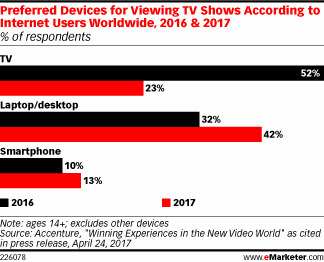






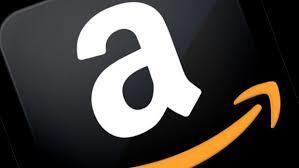


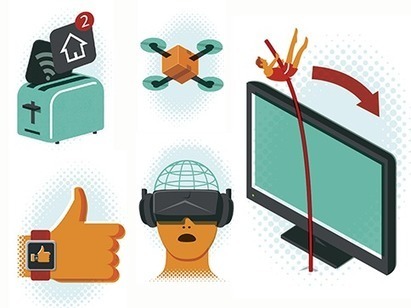
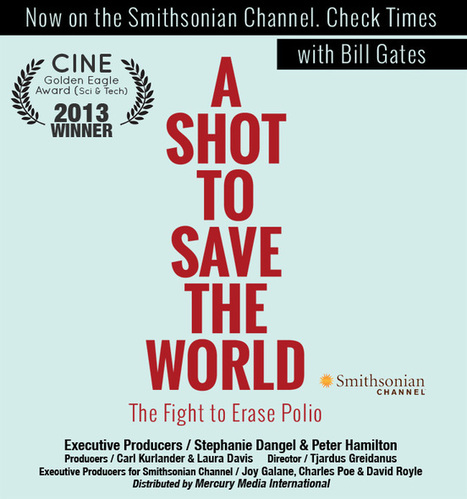


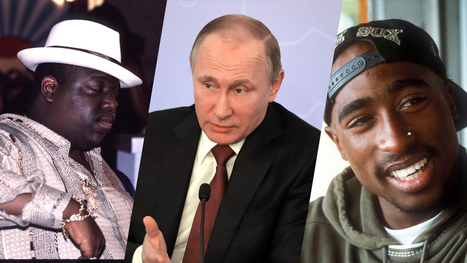
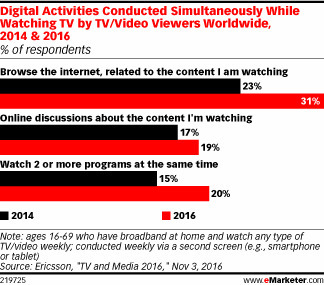

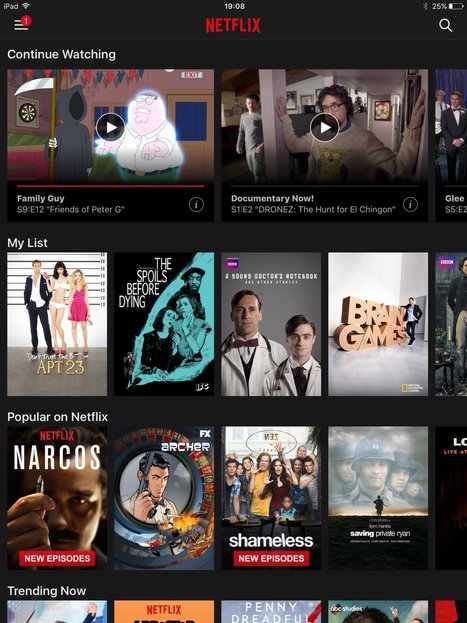
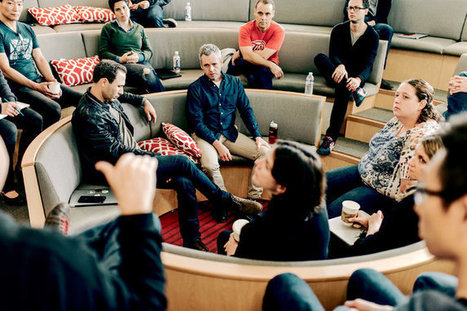
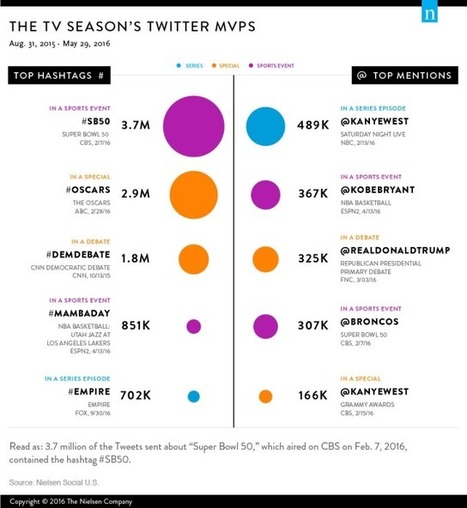



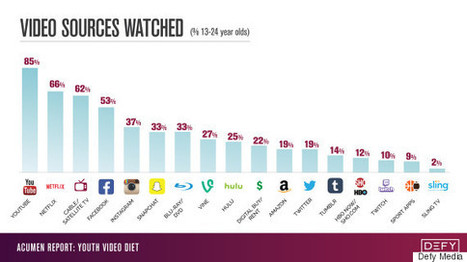

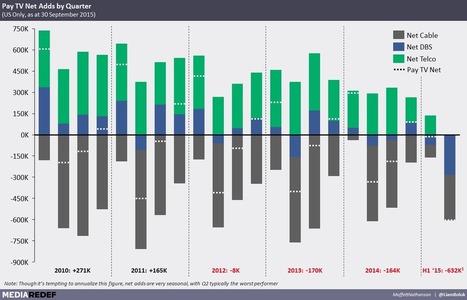






CNN's The Update arrives one month after the launch of Stay Tuned, the twice-daily Snapchat show from NBC News.